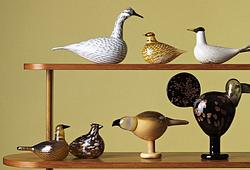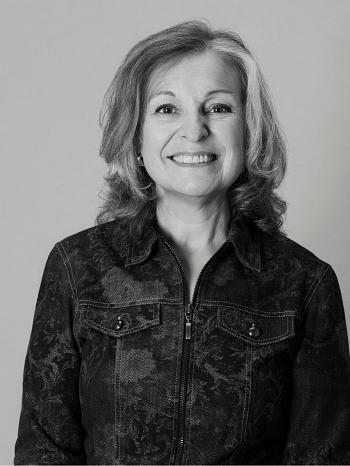Paavo Tynell
Paavo Tynell, a 1920/1930's candelabrum for Taito.
Silver-plated pewter. For seven candles. Height 39 cm. Width 54 cm.
A bit crooked sockets. Polished.
More information
Paavo Tynell (1890-1973) begun his career as a metalsmith apprentice but did at the same time study at the Central School of Arts and Crafts (today Aalto University) to receive a solid education in the field of metal art. In 1918 Tynell founded Oy Taito Ab, which became the Finnish lighting industry trendsetter during the interwar period. Taito's first years coincided with the growth of the electrification of society. This meant that the market form lamps grew and developed at a high rate and Taito's production, which had only been small-scale, quickly developed into factory production in the late 1920s.
Tynell's lamps have developed over time. His early lamps had a chandelier inspired design, during the 1920s, the use of glass became an increasingly important part of his lamps, and during the 1930s, fabric and cardboard lamp screens were added. During the interwar period, Tynell designed both art deco-style lamps and more functionalistic simple lamps. In his functionalistic inspired lamps, Tynell took into account how the lamp was to be used, the colour of the light, and the opal glass's nuances. As the post-war material rationing eased, Tynell began using brass as the main material in his lamps, and they became a great success, especially in the United States. The end of the 1940s was a productive period during which he polished his decorative style, and his lamps became more and more individual in their appearance. After the Winter and Continuation wars, Tynell's designs was permeated by a romantic spirit that expressed itself as neat and organic forms, such as flowers and leaves.
The most significant clientele of the luminaires designed by Tynell were architects, which made Paavo Tynell the leading lighting designer for public spaces.
Designer
Paavo Tynell (1890-1973) started his career as an apprentice in metalsmithing. He also attended the Central School of Arts and Crafts to gain a strong education in the field of metal art. By the age of 26, Tynell had developed such extensive skills that he was considered for a promotion from student to teacher at the Central School. However, instead of pursuing a career in teaching, Tynell decided to establish Taito Ltd.
The establishment of Taito Ltd took place in Helsinki on November 4th, 1918. The founding members included metal artist Paavo Tynell, sculptor Emil Wickström, teacher and decorative artist Eric O.W. Ehrström, silversmith Frans Nykänen, and art patron and factory owner Gösta Serlachius.
The main purpose of the company was to manufacture artistic objects using gold, silver, brass, and iron, and to establish its bronze foundry. Paavo Tynell was the main designer at Taito Ltd. Helena (née Turpeinen) Tynell, Gunnel Nyman, and Saara Hopea, who worked as technical draftsmen at Taito Oy, became later prominent artists.
Initially, Taito Ltd had two divisions: a foundry and a forge. The company started its business at Mikonkatu 8 in Helsinki, where both the forge and bronze foundry were on rented premises. However, the management of the company had more interest in continuing the forging operations, which led to the decision to close the foundry.
Following its closure, the company shifted its focus to crafting objects, and tin was chosen as the new material. This began the 'pewter era' of Taito Ltd, which lasted from 1923 to 1937. Paavo Tynell designed pewter candlesticks, sconces, vases, and mirrors. Silverware was also produced, and orders were placed, for example, with the Bank of Finland.
Taito Ltd was primarily involved in manufacturing lamps, which became the most important part of their production from 1928 onwards. They collaborated with Idman Ltd, a wholesaler who sold Taito's lamps, and this partnership significantly increased their production.
Between 1929 and 1932, Tynell designed and Taito Ltd produced commissioned works for the Finnish Parliament House, and these pieces are still part of the interior. During this period, Taito Ltd also manufactured lighting fixtures for Paimio Sanatorium.
Over the years, Taito Ltd's production increased and gradually began to trade abroad. In 1952 an agreement was signed with the Finnish American Trading Corporation to export products to America. Taito Ltd's lighting fixtures were supplied to such buildings as Finland House on 50th Street in New York City and the United Nations Headquarters.
In Finland, Paavo Tynell designed several types of lamps for various projects, with brass as the main material. Major commissions were for paper mills, churches, cinemas, restaurants, factories, hospitals, hotels, embassies, and of course regular consumers.
Taito Ltd merged with Idman Ltd in 1953 when several founding members of Taito Ltd sold a majority stake to Idman Ltd. Idman was focused on mass production. As a result, Taito Ltd was eventually dissolved and merged into its metalworks. Paavo Tynell left Idman company and continued to work as a freelance designer, collaborating with many American and Finnish architects. Idman continued to produce lamps designed by Paavo Tynell through the 1960s.
After his retirement in the mid-1960s, he designed and made candelabras in various workshops. Paavo Tynell died in 1973, leaving behind a significant legacy of Finnish industrial design.
Read more





































